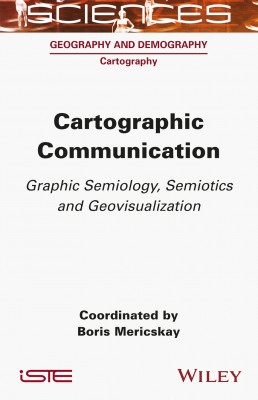
With the development of information technology and the Internet, cartography has undergone profound changes in terms of tools, uses and audiences. This new socio-technical context has consequences for cartographic communication that must be considered in light of the new dynamics at play.
Cartographic Communication addresses issues related to the transmission of spatial information through maps in the digital age and on the Geoweb. This book offers a broad overview of cartographic communication, graphic semiology and geovisualization through theoretical, conceptual and methodological contributions from various research fields. Complementary approaches (semiological, semiotic, methodological, technical, aesthetic, cognitive, etc.) are used to decipher the uses – and the communicative stakes – of current maps.
1. The Multiple Facets of the Cartographer: Communication between Rules and Attraction, Christine Zanin.
2. Cartography as a Communication Tool: Thoughts on Models, Laurent Jégou.
3. Communication Challenges in Reproducible Multi-representation, Nicolas Lambert, Timothée Giraud and Ronand Ysebaert.
4. Mapping Flows and Movements, Françoise Bahoken.
5. Cartographic Communication on the Geoweb: Between Maps and Data, Matthieu Noucher.
6. Rethinking Cartography on the Geoweb: Principles, Tools and Modes of Representation, Boris Mericskay.
7. Geovisualization and Cartographic Communication: Style and Interaction, Sidonie Christophe.
Boris Mericskay is a lecturer in geography at the University of Rennes 2, France. His work focuses on Web mapping, spatial analysis of urban data and, more broadly, the interactions between geospatial technologies and societies.